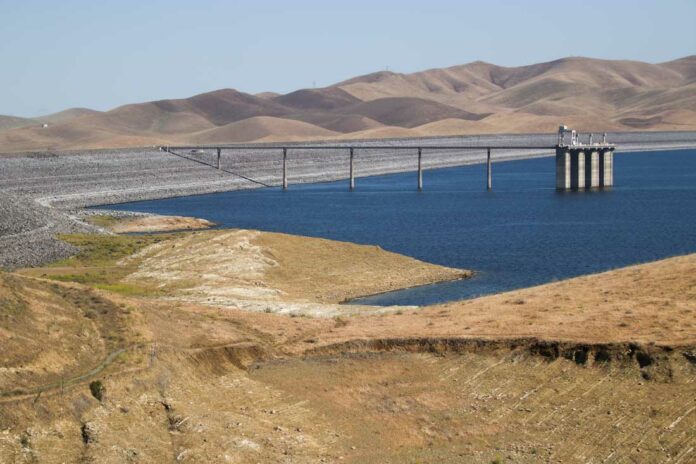
After a slow start to conserving water in our community, residents started stepping up their efforts in late August. We need more of this effort, but it’s very encouraging news to see our community respond.
The following data, from Sept. 15 to Oct. 15, was provided by Sunnyslope County Water District. Customers in the City of Hollister service area are using similar amounts of water:
– Total water usage in September/October 2022 was 15% less than the same period in 2020 and 11% less than that period in 2021.
– Year to date, total water usage in 2022 is 5% lower than in 2020 and 2021 and 12% lower than in 2013 despite the growth since then.
– About 36 million gallons of water or 110 acre-feet have been saved this year compared to 2021.
– Gallons per person per day (gpcd) in 2022 is about 89 gpcd. That is a 9.2% decrease from 2021, a 12.8% decrease from 2020, a 30% decrease from 2013, and a 36% decrease from our historical high of 140 gpcd in 2007.
– 89 gpcd is the same level of conservation that we achieved in 2015 during the heart of the last drought when there was a whole lot more media coverage about the drought.
History of the current drought:
– Drought persisted in California from December 2011 to March 2017.
– In March 2019, California was declared drought-free except for a small pocket of “abnormally dry” conditions in Southern California.
– California saw the drought expand and worsen in 2020.
– Below-average precipitation, including a weak monsoon, and above-normal temperatures and evaporative demand intensified drought conditions and brought a record-breaking wildfire season.
– Conditions continued to deteriorate in 2020-21.
– In April 2021, California declared a Drought Emergency for several counties, San Benito County included.
– In May 2021, local water agencies enacted Stage I Water Shortage Contingency Plan.
– In October 2021, the entire state was under a Drought Emergency declaration.
In late April 2022, the San Benito County Water District was notified by the United States Bureau of Reclamation they would receive a zero allocation of water for both agricultural and municipal purposes from the Central Valley Project (CVP) due to the extended drought. The CVP delivers surface water to San Luis Reservoir and this water is pumped through the Pacheco Pass into our county. This water is used to improve our drinking water quality, for growing crops and for replenishing our groundwater basin.
With this news, water managers in Hollister and San Juan Bautista implemented Stage II of the Water Shortage Contingency Plan in May 2022. This stage calls for mandatory water conservation with the goal of reducing water use 25% compared to pre-drought levels. Most of the water restrictions under Stage II apply to outside water use.
Our changing climate requires our community to move beyond temporary emergency drought measures and adopt permanent changes to use water more wisely and prepare for more frequent and persistent periods of limited water supply.
That’s why it’s also encouraging to report that many people took advantage of the Water Resources Association San Benito County’s (WRASBC) Turf Removal Rebate.
In May, the WRASBC funded this program with $150,000. By October, all funding had been allocated. The WRASBC expects over 100,000 square feet of turf will have been removed through this program once all applicants complete their projects. This will amount to approximately 1.5 million gallons of water conserved annually once these transformed gardens are established.
The WRASBC is anticipating being able to continue this program in December through a grant award and/or reserve funds.
Residential landscapes are a very big part of our local water efficiency efforts since over 50% of residential water use is for landscapes.
By making the proactive investment to remove turf and replace it with drought-tolerant landscaping and ground covers such as mulch, low-water use plants and rocks, customers can significantly reduce their water use, resulting in long-term cost savings and lower maintenance time and costs to maintain. And more importantly, this helps stretch our water supply.
California is about to enter its wet season, when hopes are high for replenishing lowland rains and mountain snows after its three driest years on record. But, for the fourth year in a row, the state could languish in a drought that is having dire effects on its water resources.
Last week, the National Weather Service projected another warm and dry winter for large parts of the state—with drought persisting or getting worse. That’s why it’s so important that we conserve now to stretch our local water supplies.
Fortunately, we have water stored in our local groundwater basin. However, this water is finite, and we must take action to stretch this supply since we don’t know when the drought will end.
Remember, as the days get shorter, your landscape needs less water even if we don’t get rain. When rain becomes frequent, turn off your irrigation system.
To view the mandatory Water Shortage Contingency Measures and to learn more about programs to help you be water efficient go to: www.wrasbc.org.
To schedule a free leak check and irrigation assistance, call 831.637.4378.
Shawn Novack is Water Conservation Programs Manager for the Water Resources Association of San Benito County, and the San Benito County Water District.









More propaganda from local agribusiness..